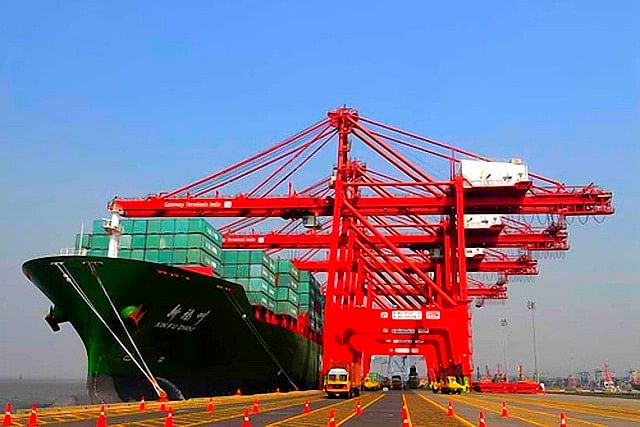Cabotage has now become a mystery topic that keeps surfacing and resurfacing in financial media once every few years.
It resurfaced again recently with a daily claiming that restrictions would be removed.
A series of broad-spectrum policy reforms and unprecedented attention to project implementation have transformed the Indian economy over the last decade. The most visible proof of this change is evident in infrastructure creation.
However, coastal shipping remained an outlier. For a country with a 7,500 km coastline, shipping contributes barely seven per cent of the domestic cargo mix, as against 49 percent in China, 34 percent in Japan, and 38 percent in EU-27.
Theoretically, coastal shipping should be highly competitive as its fuel consumption is 15 percent of road and 54 percent of rail. However, in India, shipping tariff is not competitive due to a lack of cargo. And, since the tariff is not competitive, there is less cargo.
Ending this egg and chicken story is key to decongesting the railways and highways, thereby improving the overall logistics efficiency.
Removing cabotage laws is a definite way to achieve this goal.
What is cabotage law?
Cabotage laws are the regulations that disallow foreign registered ships to carry coastal cargo. In India, this domain is preserved for the small local industry.
With less than 1500 ships registered in the country, the Indian shipping industry is ranked 18th or 19th globally. On top of that, it is dominated by the state-owned Shipping Corporation of India (SCI) and privately held, Great Eastern Shipping.
The small size of the industry and limited players should make reforms a cakewalk. However, for nearly half a century, successive governments have discussed the possibilities of relaxing cabotage laws but have avoided taking a call.
Mysterious failure
The failure is mysterious but politics agnostic.
The Congress-led UPA government of Manmohan Singh tried hard to liberalise coastal shipping. The commerce ministry was keen. Files moved back and forth at great speed for nearly four years between 2006 and 2010.
An Asian Development Bank (ADB) study recommended the removal of cabotage to make coastal shipping competitive. “Cabotage laws can be reintroduced when there is sustained growth in coastal cargo,” it said.
After 2010, the UPA government was mired in controversies and barely had time to reform. Four years later, in 2014, the Rakesh Mohan Committee on National Transport Development Policy, willy-nilly supported ADB’s views. The aim was to disrupt the prevailing system and ensure competition to attract cargo.
Once the sector catches the fancy of users and more local ships are lined up, the movement of foreign flag vessels may be restricted.
After coming to power in 2014, the Modi government too pushed for reforms in coastal shipping. As shipping minister, during the first term of the government, Nitin Gadkari batted for the removal of cabotage. He criticised the local industry for failing to make use of the protection to add capacity and bring dividends to the national economy.
Gadkari’s grievances were genuine. Foreign ships carrying timber from Southeast Asia to Gujarat often return empty. Given a chance, they would pick up local cargo for India’s western coast ports on the return journey. Better capacity utilisation is a win-win.
The importer in Gujarat might have enjoyed lower sea freight from Indonesia. Low-cost transfer of goods would have helped both the industries in Gujarat and consumers in Kerala. Gadkari was relieved from the shipping ministry in the second term of the Modi government. Cabotage rules prevailed.
The local shipping industry argues that 80 percent of the maritime nations, including China, have cabotage laws. What goes untold is that, the Chinese shipping industry ranks among the top 10 in the world and created viable transport opportunities for the local economy. In comparison, the Indian shipping industry is enjoying the benefits of license raj.
Return of the buzz
Cabotage has now become a mystery topic that keeps surfacing and resurfacing in financial media once every few years, without much result. It resurfaced again recently with The Economic Times claiming that restrictions would be removed.
Given the history, it is difficult to add much credence to such claims. It would be good if the cabotage is removed. It would be better to know what is preventing its removal for so long.
Some blame bureaucratic stranglehold through the Directorate General of Shipping and SCI for the prolonged stalemate. As a thumb-rule state-owned companies breed inefficiency and resist competition.
Meanwhile, SCI is selected for strategic disinvestment. The cabinet committee approved the proposal in 2019. Covid delayed implementation. The finance ministry recently told the Parliament that preparations were on.
The government may consider removing the cabotage rule and creating a level playing field before the disinvestment. Alternatively, coastal shipping may well become a private duopoly.


